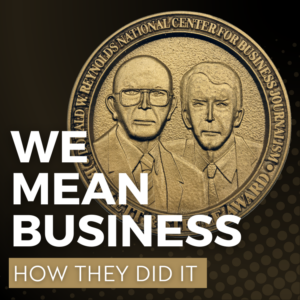People are drinking less soda and choosing less sugary alternatives. This new shift in American consumption has caused some headaches for big soda companies.
Soda sales slipped for the twelfth consecutive year in 2016. As these companies scramble to enter new markets in the beverage industry, money is being poured into new ideas to attract consumers.
Today, a flurry of options flood the store aisles. Big soda companies are hoping that by quenching on these new ideas, they can retain customers who choose for healthier options. And the extent of the soda drought has been tapping into other beverages as well. The beer industry is trying to get more millennials to drink their products since younger adults prefer spirits and wines as opposed to drinking a cold one.
How these companies respond to the shift in Americans’ tastes has a lot to do with management, but the stories surrounding the investment of new trends and products are plenty to go around for business reporters across the country.
Trends flourish, fads fade
Companies have been hopping into the latest trends in the beverage industry and falling out of love for ones that prove to just be fads.
The tea market is hot have been climbing since 2013. According to an analysis by Statista, an online market-research firm, the tea market is expected to be worth $44.3 billion. The cause for this expansion is driven by ready-to-drink formats, according to Spins research firm. Labels have also helped the industry grow in recent years. Consumers prefer sustainable products and transparency into what goes in their drink, according to the same report.
Consumers have been pushing the direction of these beverage companies as with Starbucks. The Wall Street Journal reported that Starbucks was cutting the sugar content in their Frappuccinos. The latest move from Starbucks to cut back on its sugariest drink follows the needs of Americans to turn to healthier options. Frappuccinos are Starbucks biggest seller, and the company’s decision to cut back on sugar will have an effect on sales.
Kombucha is also growing in popularity among American consumers. People are more health-conscious in deciding what to drink. According to Statista, sales for kombucha products sold across supermarkets, health stores and online has been rising as soda sales ebb. In 2015, revenue for kombucha products in the U.S. edged close to $500 million, according to Statista.
Look at some of the new beverages that are of interest to your local audience. Is there someone or maybe a company that is leading the drive?
Private companies in your backyard
A Scottsdale, Arizona-based company has been selling their version of sparkling water in the Phoenix metropolitan area. Yerbae, the enhanced sparkling water company, has listed their product on Amazon. I’ve noticed this past summer that my neighborhood Costco had Yerbae on display in their store. The company has been partnering with Costco, showing Yerbae products across several cities in the nation.There isn’t much information about the company, and this is a prime example for reporters to cover nascent beverage companies in local areas.
It’s not just in Arizona. California has seen investors attracted by new products that offer healthier choices for customers. More recently, a beverage accelerator has taken an interest in Cave Shakes, a Los Angeles-based ready-to-drink shake company. The company specializes in shakes that are vegan, dairy-free and sugarless.
There is a bevy of companies waiting to make their mark at the local level. As reporters it is always important to keep a keen eye and observe the new trends and products that are happening.











